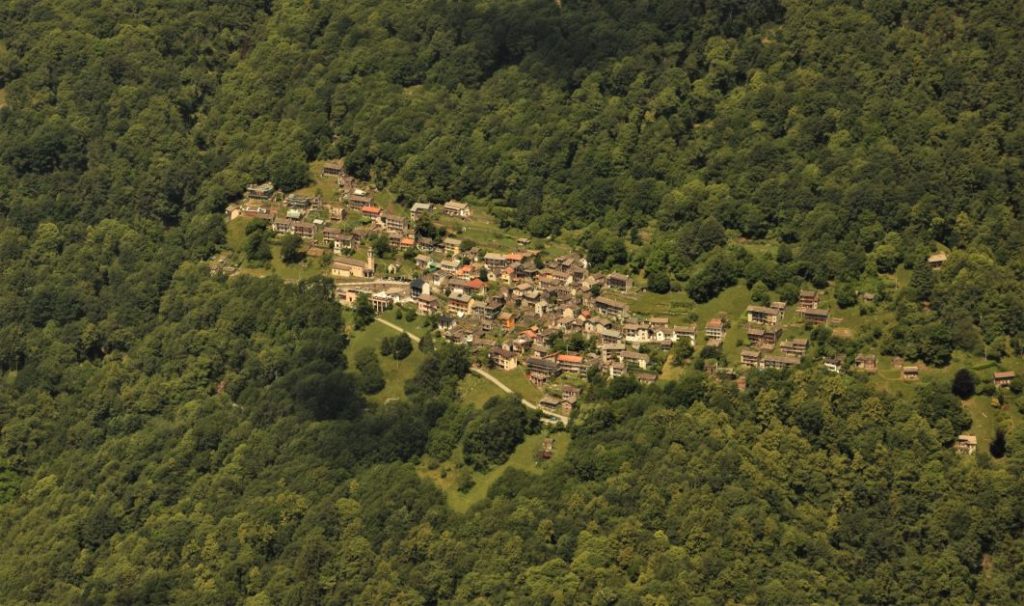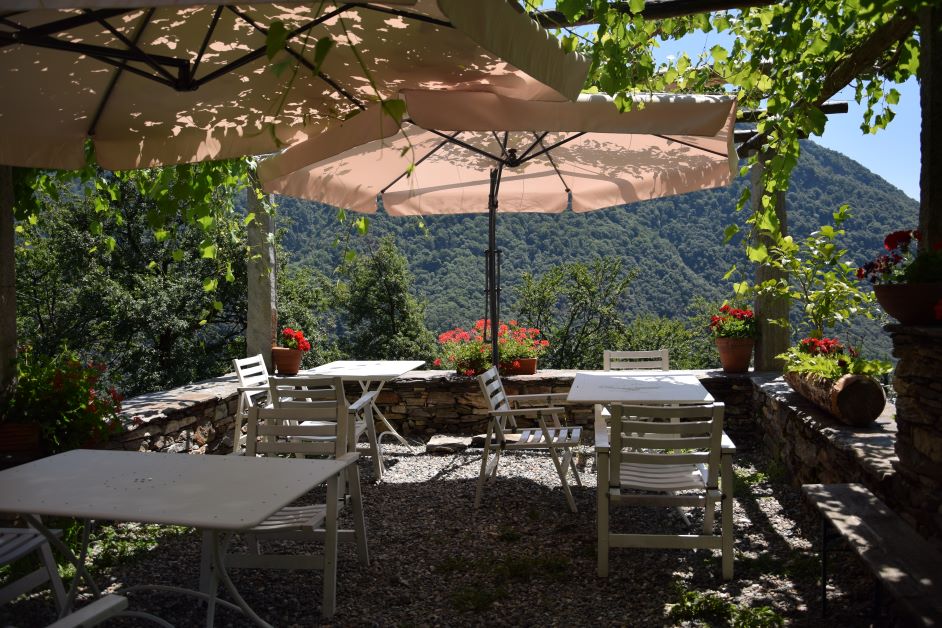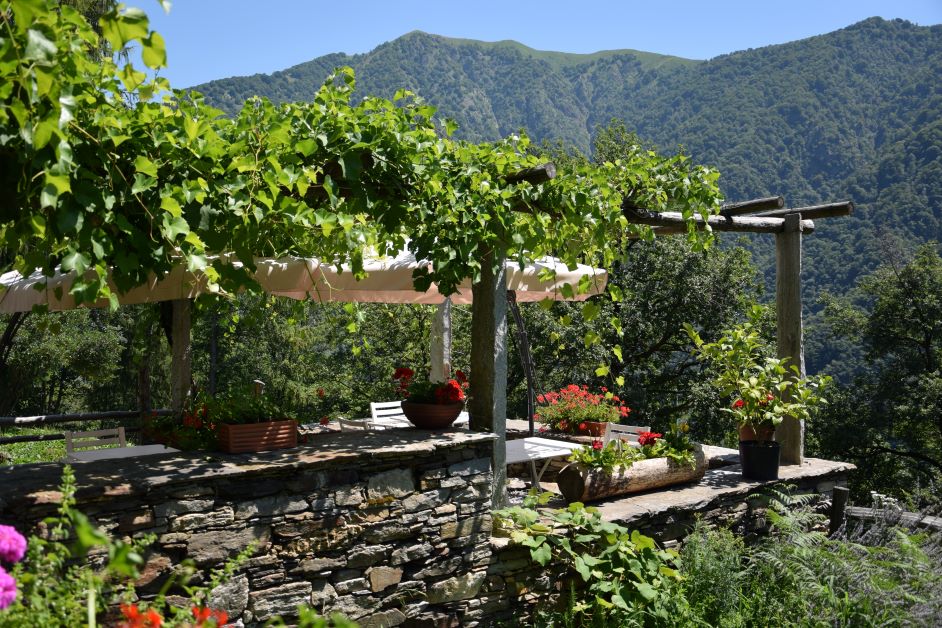Article and photos by Luigi Ranzani
Looking north from the waterfront of Stresa or the enchanting gardens of Isola Bella, you’ll be captivated by the majestic mountains that appear to cradle the serene waters of Lake Maggiore. Below this rocky range lies a tapestry of valleys and hills, intertwining and overlapping, dressed in rich tones that transition from dark green to ocher, ruby red, and the warm yellows of autumn.
This is the realm of Val Grande, a remarkable territory that was once heavily exploited and inhabited by humans, now preserved as a National Park. Since 1992, this park has been dedicated to maintaining its unique landscape and rich natural heritage.
… a tapestry of valleys and hills intertwined and layered, cloaked in a vibrant mantle that shifts from dark green to ocher, ruby red, and the warm yellows of autumn.
Situated in the northeastern tip of Piedmont, nestled between Lake Maggiore, the Ossola valley, and Switzerland, lies a dense labyrinth of mountains and rivers, pastures and forests. This untouched nature spans 150 square kilometers—a mountainous haven the size of Malta, where the only way to truly explore is on foot, leaving behind the car for a sturdy pair of hiking boots.
A popular starting point for this journey of discovery is Cicogna (770m), the “small capital” of these valleys. This quaint village, just behind Verbania, features stone houses with long wooden balconies, arranged in neat lines, clinging to the mountainside and surrounded by chestnut forests. Accessing Cicogna involves a drive up an asphalt road that runs above the San Bernardino torrent, the primary river in the valley.
This drive feels like an exploration in itself, as the sense of seclusion and distance from the ordinary world grows stronger. Upon reaching a tunnel, we find ourselves at Ponte Casletto, where 40 meters below, the Val Grande stream meets the Pogallo stream in a breathtaking setting, where sparkling waters turn emerald green and break the primordial silence of the mountains.
-
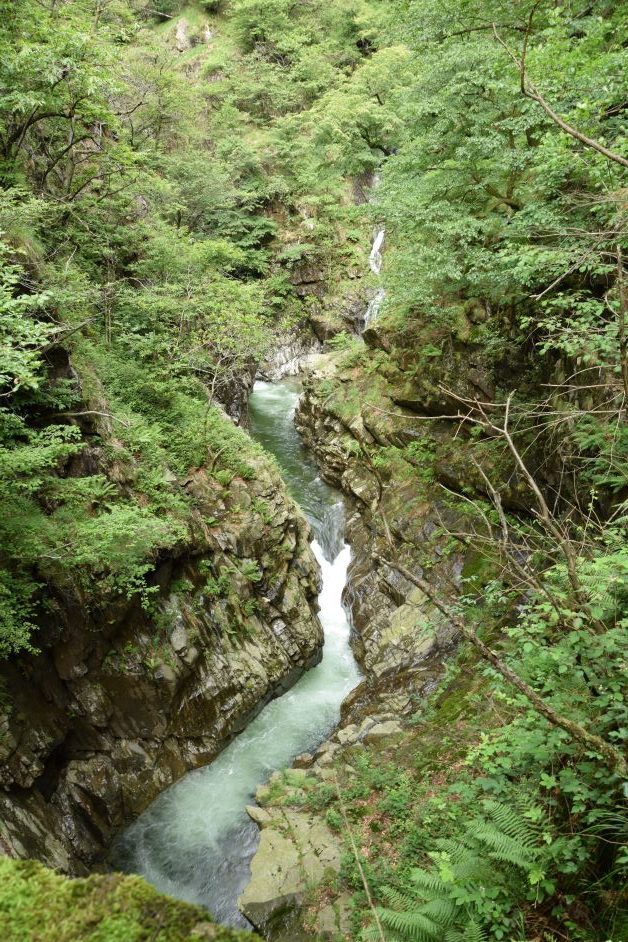
Rio Pogallo from Casletto bridge -
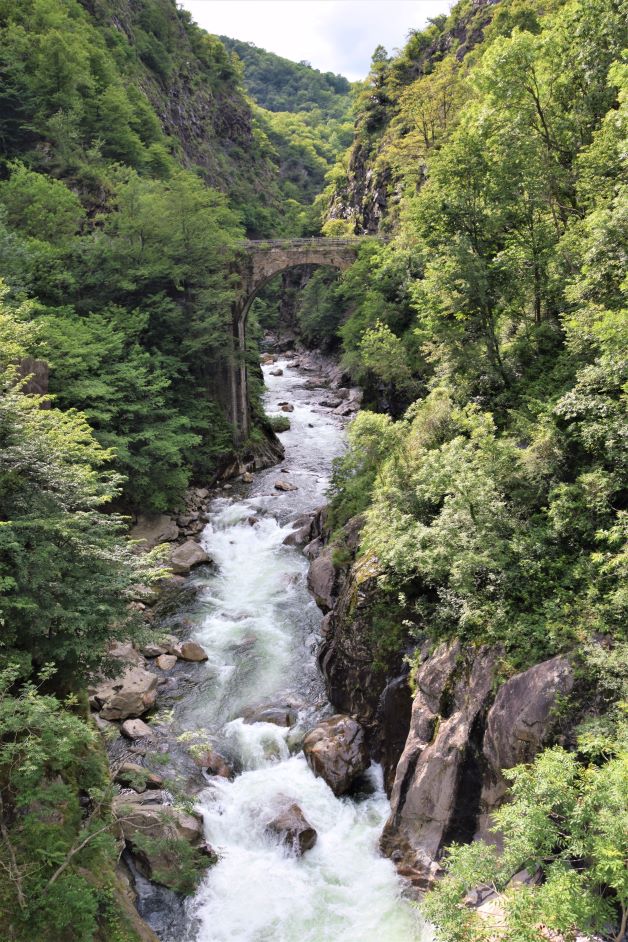
Rio Val Grande from Casletto bridge
Immediately after, the road ascends quickly with sharp hairpin bends, allowing the view of the valley to widen. We are now approaching the village of Cicogna, which hosts around twenty residents, a church, a restaurant, a hostel, a farmhouse, and a bed & breakfast, along with the park’s visitor center. There’s quite a bit here, considering the challenges of daily life so far from urban conveniences. After enjoying a traditional coffee with grappa, it’s time to strap on your backpack and head toward Alpe Prà.
The charming cobblestone trail gently ascends through ancient chestnut groves, revealing signs of the past agricultural civilization with numerous meticulously constructed stone terraces that once nurtured rye, millet, beans, and potatoes. Despite the effort, each step brings you closer to the breathtaking clearing of Alpe Prà.
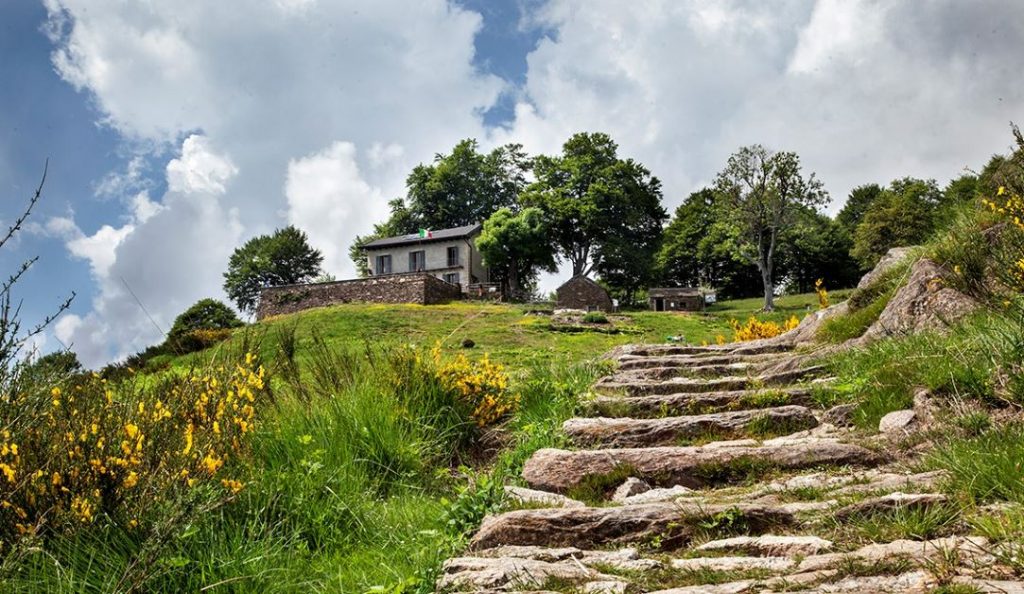
In the local dialect, “Prà” means “meadow”: a pasture located on a natural terrace descending from Cima Sasso, where grass is harvested twice a year and stored for winter fodder for goats and cows. At the top of this pasture, a small and inviting refuge offers the perfect setting for a relaxing break. From its terrace, the view is expansive and remarkable.
To our right, across the deep valley, a jagged ridge, dense with impenetrable forests, forms the western border of the Park. Further along, the impressive Monte Rosa dominates the horizon, towering majestically with ice and snow-covered peaks rising over 4,000 meters.
To the south, we are enchanted by the soft, translucent light reflected off Lake Maggiore. We can even play a little guessing game identifying the names of the islands in the Borromean Gulf and the towns along the coastline. To our right, the rugged, densely wooded ridge marks the park’s western edge, leading to the imposing Monte Rosa, creating a stunning backdrop of icy summits over 4,000 meters high.
Beneath the shade of a centuries-old ash tree, one can savor the aroma of polenta cooked over a wood fire, served with red meats that have been slowly stewed with vegetables, or paired with a selection of local cheeses or soft Gorgonzola. Before heading back to Cicogna, enjoy the enchanting low light and muted ambiance of the late afternoon as you visit the mysterious “coppellato boulder”:
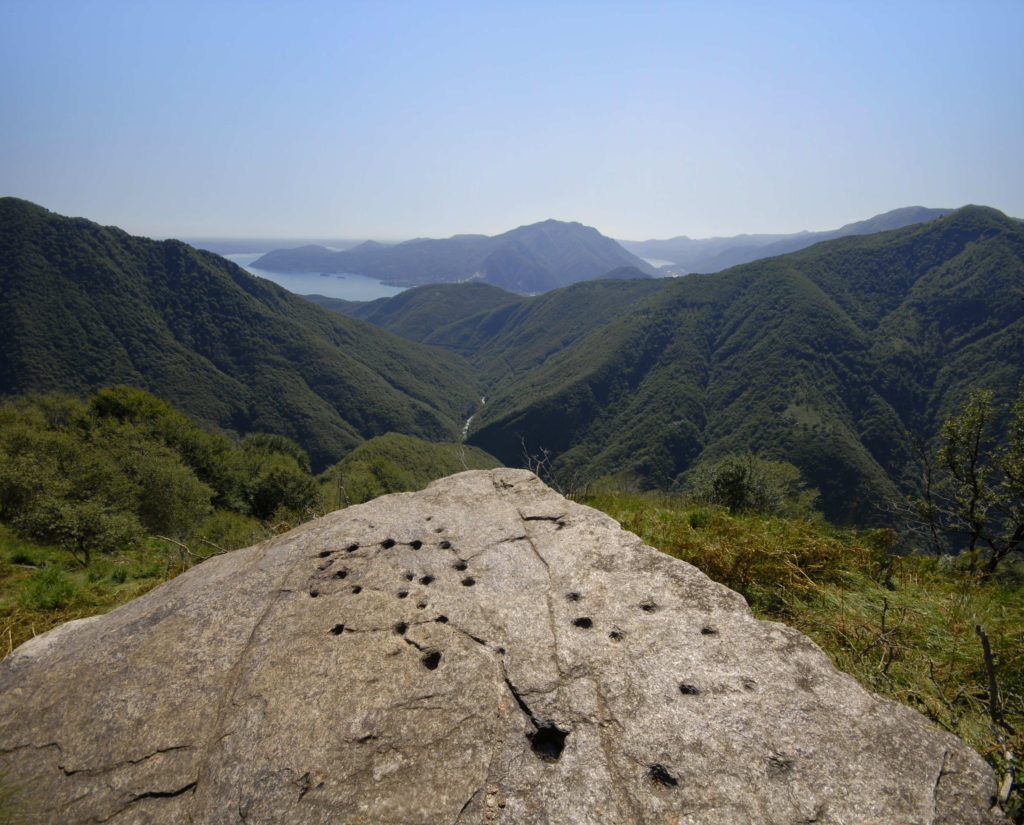
This is a flat stone slab that rests at the lower edge of the pasture, dominating the valley below. Its upper surface is adorned with a series of small cup-like depressions, interconnected by channels—a representation of religious symbolism that dates back to ancient history, likely crafted during the Iron Age (II-I millennium BC).
Still enveloped by the mysteries of our ancestors, we continue into the tranquil shade of the forest, eventually returning to Cicogna. It’s the perfect opportunity to sit beneath a fragrant vine-covered pergola, savoring the evening while tasting local specialties such as goat cheese and salami from Rolando, the proprietor of Corte Merina farmhouse.


